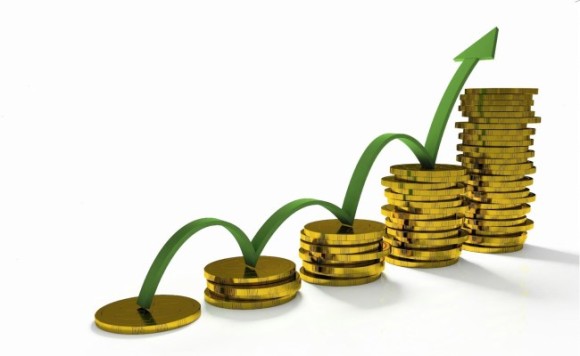There is excitement in the air with the election fever running high!
Euphoria over the post poll scenario brings us to the point where we tend to believe that nothing can go wrong from here – the worst is over!
Riding the Modi wave, the hype created by the media is that NDA government is only a couple of months far. People are unwilling to even consider the unpleasant possibility of having a hung parliament, which is not too remote a chance!
The countdown to the UPA’s second term has begun. It had been marked by gross corruption, arrogance of power, mass public movements on various issues, a falling rupee and consumer price rise. The results of the recent 5 state elections are a pointer to the scheme of things to follow. The euphoric march of the Indian economy into the 21st century now exceedingly looks mellowed down, if not a damp squib!
India’s economy has been weighed down by various factors such as high inflation, a weak rupee, a fall in consumer demand and a drop in foreign investment. As per recent economic indicators, India’s external debt stands at 22% of GDP and reserves are 15% of GDP. The only silver lining was that the reserves are enough to pay off the short term debts and so we are not as bad as in the early 1990s.
During the last few years the GDP growth has steadily decreased. During the last quarter, due to the drastic changes by the newly appointed RBI Governor, India’s economy grew by a slightly better-than-expected annual rate of 4.8% in the July-to-September period, up from 4.4% in the previous quarter. This is the fourth quarter in a row that India’s annual growth rate has been below the 5% mark, and the previous quarter’s rate of 4.4% was the lowest for four years. India expects the economy to expand by 5.3% this year, down from its earlier projection of 6.4%.
India’s current account deficit (difference between Export Revenue and Import payments) fell to $5.2bn during the July-to-September quarter, down from $21bn during the same period last year. The current account deficit stood at 1.2% of the gross domestic product (GDP) during the quarter, down from 5% of GDP during the same period last year. A widening deficit brings down the country’s foreign exchange reserves, as well as the value of Rupee (INR). The effect of falling value of Rupee is that imports have become more expensive and contributed to a high rate of consumer inflation, which was a staggering 10.1% October, up from 9.84% in September.
The recent slight improvements in indicators were due to India’s Reserve Bank’s unveiling of series of measures over the past few months. The mood of the economy is looking up. Optimism is due to an expected change of leadership and ensuing policy changes that could revive the Indian economy. The same has happened in Japan and China in recent years. If that happens, it will gain attention of global investors and the markets can turn bullish.
Lately, the global recovery is boosting India’s trade outlook. There are strong signs of financial recovery in the US, Europe, UK and Japan. In these countries the efforts of policymakers is focused on reviving growth after a period of slowdown and recession since 2008. Also the recent fall in commodity prices especially of key import commodities like oil, industrial and precious metals, combined with low domestic demand and a firm rupee could help reduce imports and reduce India’s trade deficit in 2014.
The Indian economy is looking up due to the cyclical macro adjustments made during the last year. They have encouraged flow of foreign exchange deposits. The domestic fundamentals are expected to improve as losses bottom out and growth recovers in second quarter of the financial year. This will encourage improvement in the investment cycle.
The government raised import duty on gold imports – the second highest imported commodity of India, after oil. Gold is one of the biggest contributors to the deficit and the most unproductive import! The gold imports dipped significantly during the second quarter, while exports picked up due to fall in rupee value and this helped to shrink the deficit. Gold imports amounted to $3.9bn during the quarter, down from $16.4bn in the previous three months.
Although Government imposed duties on import of gold and has banned gold coins and medallions, this is not a long term step. High duties and controls will only encourage a parallel economy of smuggling and black money, resulting into evasion of taxes and giving a boost to smuggling mafia. This mafia can be easy recruiting grounds for anti-national groups.
Due to reduction in gold and silver imports and a surge in exports due to the weak rupee, the trade deficit fell to $6.7bn in September from $10.9bn in August. The trade deficit fell to a two-and-a-half-year low. The contracting trade deficit will help India reduce its current account deficit which was a whopping $88bn at the end of last fiscal year.
RBI has raised the cost of borrowing to 7.75% in a bid to curb inflation. High interest rates are hurting businesses and households, and having a negative impact on the economy. Borrowings for business become expensive, hitting at productivity and efficiency. Consumer demand is directly affected. Raising interest rates on NRI deposits to attract flows of foreign exchange bank deposits in order to stabilise the falling rupee did help stem the slide for the time being. But repaying the amounts along with high interests will prove a major burden at the time of repayment.
The economy is affected adversely due to imbalance in skills of youth where on the one hand there is high unemployment and on the other hand there is acute lack of trained manpower in certain key manufacturing sector. This exposes to the lopsided education policy which is not in tune with the needs of the economy.
The politically motivated Food Bill passed by the parliament to subsidise food for 800 million people will amount to increased spending $20 billion amounting to 1.2% of GDP. Surely this food will not improve the health of the economy!
Lack of infrastructure, inconsistent government policies and delays in government clearances have affected exports as well as foreign investments. Incomes/ salaries haven’t risen as much as inflation, resulting into curtailed consumer demand. This has resulted in slowdown in key sectors such as mining and manufacturing. Slowing growth, coupled with a recovery in developed markets, such as the US, has made India a less attractive option for foreign investors. Speculation that the US may scale back its key economic stimulus measure has seen investors pull money out of emerging markets, such as India. A combination of weak investment, high inflation, lowering consumer demand and tight monetary policy would not let India’s economic recovery gather momentum for now. Only a stable and business friendly government can influence the sentiment and stimulate the economy.
Post-election is the time to deliver – and not mere rhetoric!
Let’s see that magic wand be put to use!

